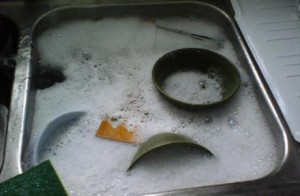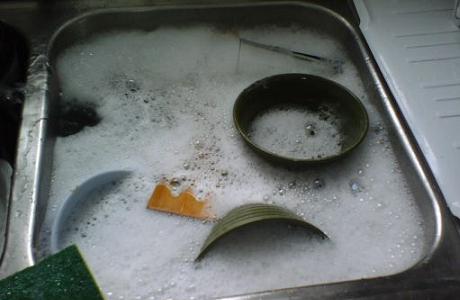To start washing dishes by hand, all you need is water, dish washing liquid, and a sponge, right? Yes and no. To get your dishes properly and efficiently cleaned, try these great hand-washing tips.
Set the scene. At the side of the sink, assemble everything in order of use. Glass and flatware go first because they are prone to spotting and will benefit the most from the cleanest, soapiest water. Next come plates, then serving pieces and utensils, and, finally, cookware.
Fill the sink before dishwashing. Give your dishes the cleanest start. Use warm water to fill the sink because it cuts grease and evaporates off dishes quickly, helping dishes air-dry faster.
Take special care of china plates. Don’t stack these in the sink, as they’re prone to chipping. Carefully wash one piece at a time. Avoid using abrasive cleaning products or scrubbers while dishwashing these types of items, too.
Protect your fine flatware. Silver and silver-plated flatware should be, at the very least, rinsed—if not washed—immediately after the meal is over. Some substances, such as salt, can be corrosive to these precious metals.
Keep crystal clear. Individually wash pieces of crystal Glass. Use warm water, not hot water, because extreme temperature can weaken glass.
Don’t be afraid to use dishwashing liquid on a cast-iron pot. Legend has it that suds will harm your seasoned pot, but soap is needed to thoroughly clean away cooked-on food and will not harm the surface. Cast iron rusts easily, so it should always be hand washed and must be dried immediately. Dry with a paper towel to avoid leaving rust marks on your dishcloths.
Treat hands with care. Remove rings before dishwashing so water doesn’t get trapped beneath them. Be sure to dry hands thoroughly but gently after you finish the job, too, to keep skin looking soft and smooth.

